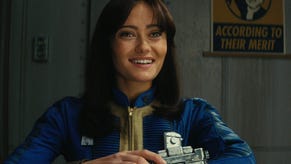Unlimited Detail Wants To Kill 3D Cards
Jim pointed me at this video earlier, presumably believing that my knowledge of, for instance, how to overclock a processor without setting my house on fire means I can say whether there's any water to its boasts. Um. Maybe? Unlimited Detail Technology reckon their clever tech is the biggest leap in realtime 3D graphics in decades. If what they say is true, we're going to wave goodbye to games rendered in polygons, and hello to games free from cubist edges and limited model counts. Take a look below, and see what you think.
It's eight minutes long, but they're worthwhile minutes. Apart from the one powerpoint slide about why polygons are bad that it shows about 15 times, anyway.
(Before the 'but that looks rubbish' comments arrive - the reason Unlimited Detail give for the stuff they're showing looking a little rustic is that the artwork is created by programmers, not artists.)
Let's leave aside the fact that the voiceover alternates between chirpy educational TV and a strange creeping menace, and instead concentrate on what it's promising. To whit, games that can show as much or as little as the creators wish, with no apparent concern as to the hardware they're running on. It's done by using points instead of polygons, it runs purely in software, and it can even do its thing on a mobile phone. It sounds amazing. It sounds crazy. Maybe it is - grud only knows we've seen plenty of wondrous-sounding technology promises fail to arrive over the years, but let's hope this one can pull it off. The rough concept behind it is that the game is only ever rendering the pixels you can see at any one time, rather than trying to muster the whole shebang on a constant basis. Or, to use their words:
"Unlimited Detail is basically a point cloud search algorithm. We can build enormous worlds with huge numbers of points, then compress them down to be very small. The Unlimited Detail engine works out which direction the camera is facing and then searches the data to find only the points it needs to put on the screen it doesn’t touch any unneeded points, all it wants is 1024*768 (if that is our resolution) points, one for each pixel of the screen. It has a few tricky things to work out, like: what objects are closest to the camera, what objects cover each other, how big should an object be as it gets further back. But all of this is done by a new sort of method that we call MASS CONNECTED PROCESSING. Mass connected processing is where we have a way of processing masses of data at the same time and then applying the small changes to each part at the end."
There's another video on the site - I can't find an embeddable version yet, but it's got much more footage of the tech itself in action. It's the Comparison one at the bottom of the page that you're after. Oh, be warned Voiceover Guy gets even stranger in it, possibly due to the insane bell-based soundtrack.
With the released footage only demonstrating static environments rather than an interactive landscape, and anything playable apparently being some 16 months off, it'd be reckless to start shouting "THE FUTURE! THIS IS THE FUTURE!" just yet. The theory seems sound, but the practice can only be complicated. Creating content, for one thing - it's expensive enough for developers to create a current-gen AAA game, so how do they muster the resources to fill a photo-real world with, ah, unlimited detail? It'd be lovely to see it, of course, but it may take some doing.
Secondly, the tech's strength seems to be in geometry - real-time animation, lighting and shadowing seems a little skipped over thus far, and may be an area in which UDT lags behind the otherwise more old-fashioned polygon-based rendering system. Again, though, the stuff on show is terribly early and wasn't created by pro artists. Moreover, even if it can't ultimately compete with high-end traditionally-rendered games, it could well be a fantastic way to make low-end machines create far more complicated scenes than they'd otherwise be capable of.
Keeping an eye on this one. The potential is incredible, whether or not the industry picks it up.









